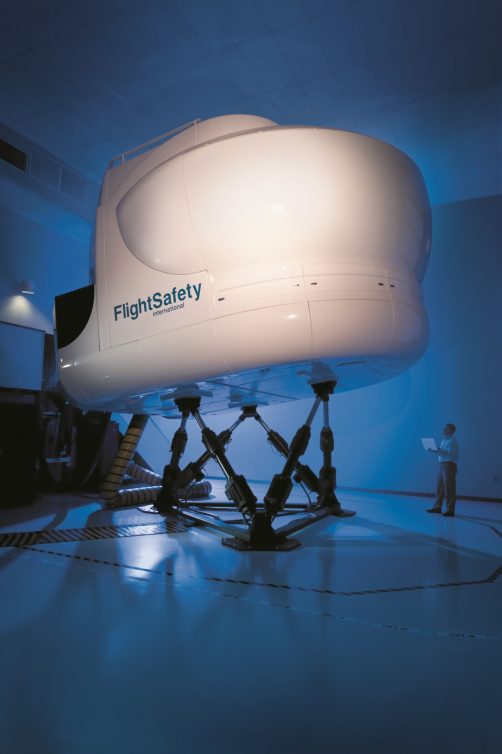
FlightSafety Simulator – Photo: FlightSafety International Inc
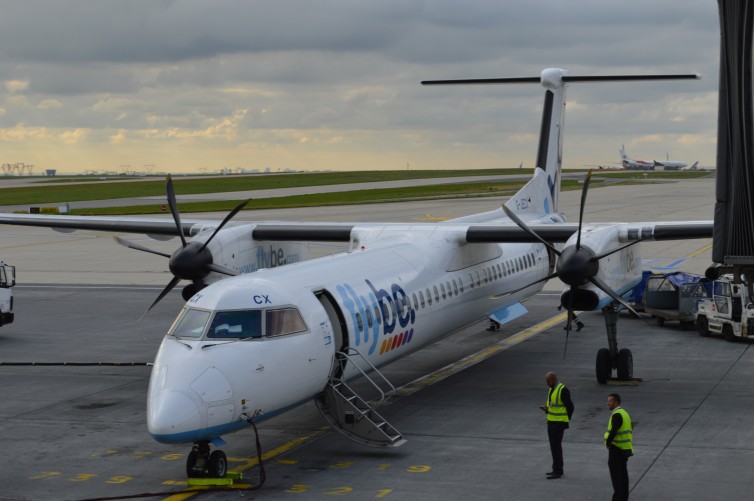
Our ride: Q400 Dash 8 – Photo: Alastair Long
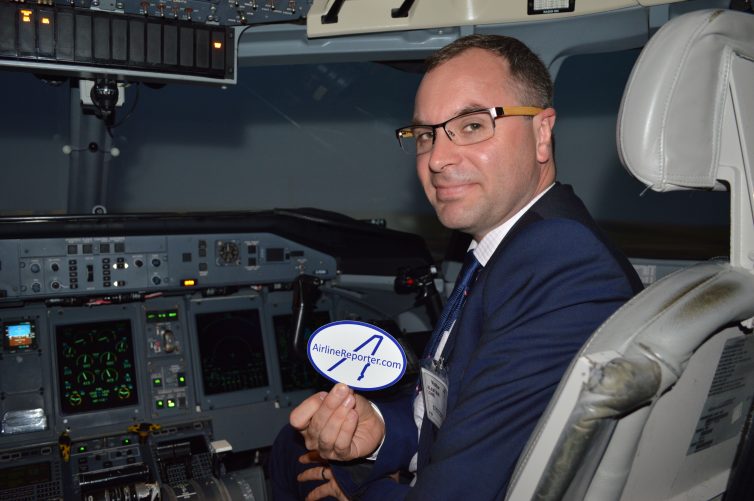
Here I am flying the AirlineReporter flag – Photo: Cristina Rodriguez | FlightSafety
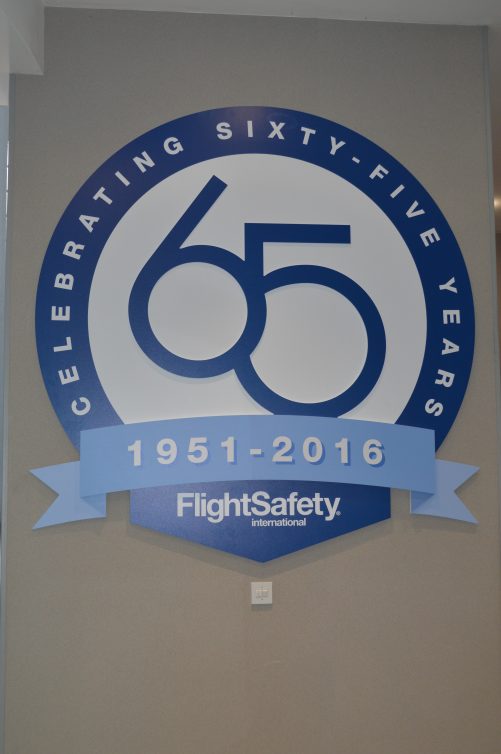
Happy birthday FlightSafety – Photo: Alastair Long | AirlineReporter
The cabin noise was obviously much quieter than I remember it as a passenger. Nevertheless, the level of simulated noise emissions matches the flight deck of an actual Dash 8. That’s understandable really – simulated flying conditions need to be as realistic as possible in every conceivable detail.
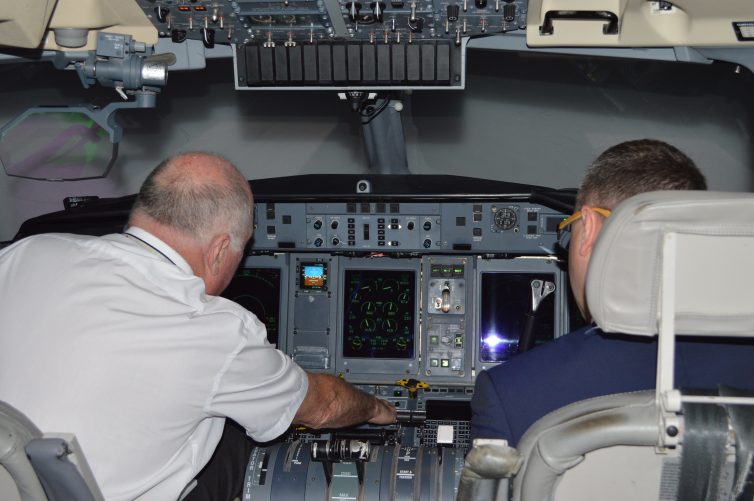
Flight deck work – Photo: Cristina Rodriguez | FlightSafety
We then repeated the process all over again out of London Luton (LTN). I was impressed with the attention to detail when I saw easyJet’s distinctive orange-colored Hangar 89 headquarters to my left as we hurtled along the runway.
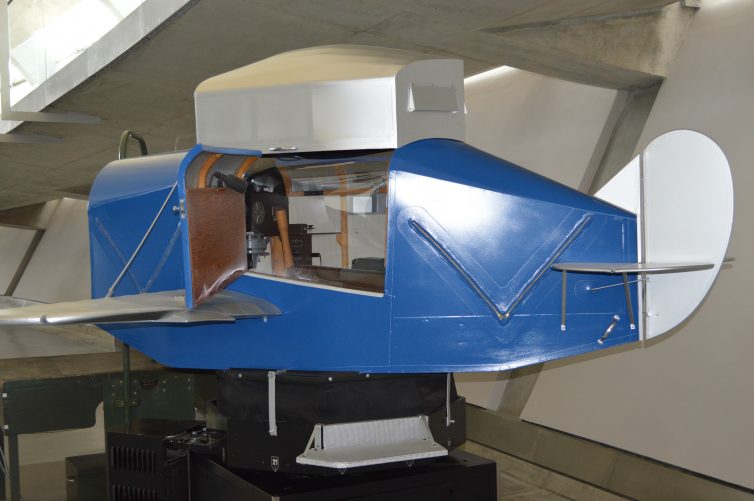
Link D2 trainer – Photo: Alastair Long | AirlineReporter
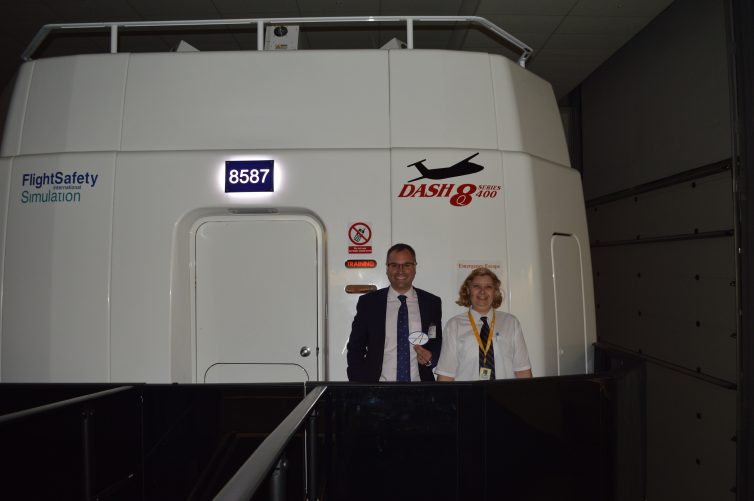
Sense of scale – standing outside the Dash 8 sim with Program Manager Michele Rodrigues – Photo: Cristina Rodriguez | FlightSafety
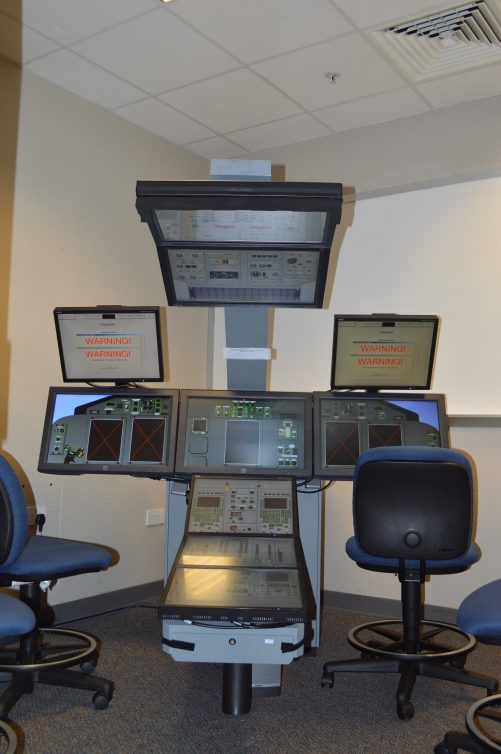
Dash 8 FMS classroom training – Photo: Alastair Long | AirlineReporter
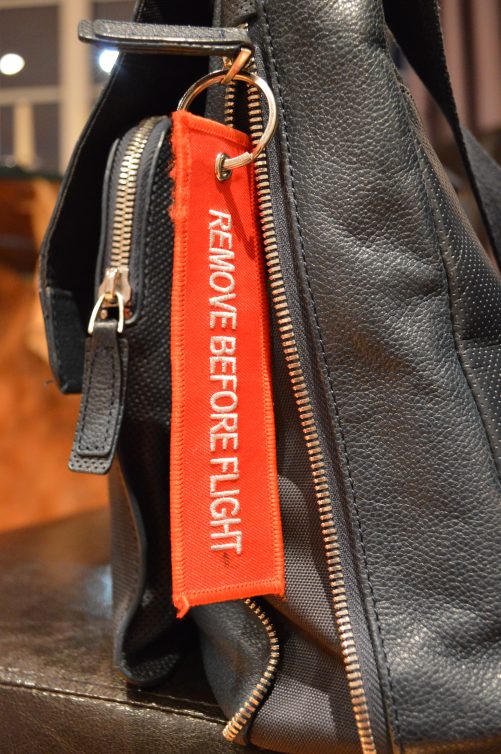
Safety warning – remove the reporter from the flight deck before flight – Photo: Alastair Long | AirlineReporter
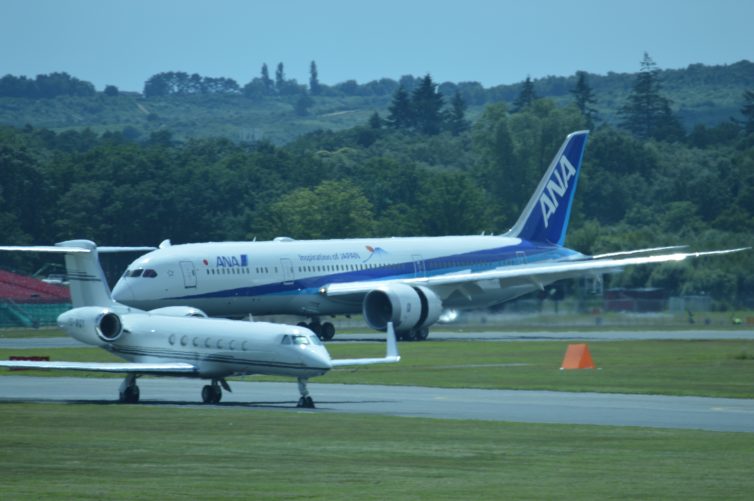
ANA’s ‘Inspiration of Japan’ Dreamliner preparing for Farnborough – Photo: Alastair Long | AirlineReporter
Tech: How to Recover Lost Photos… Or, Just Back Up So You Don’t Have To
Flying Air Transat Club Class from Manchester to Vancouver










A great post Alastair, thank you. Sure, I’ve ‘flown’ a simulator or four and crashed about 35% of the approaches. Obviously I’m not a current pilot! Still, it is a lot of fun, a joy that you now know as well. As I think you have discovered, the various full motion devices are marvelous, so good that you can easily forget that it a SIM, not the real airplane. Glad that you enjoyed yourself. -C.
Thanks Cook. I’m glad you enjoyed the piece. For me it was merely a simulated glimpse at a pilot’s life in the flight deck. I’m grateful to the FlightSafety guys for the opportunity. It also helps me put aviation and airline experiences into a bit of context when writing.
I have over 27,000 hrs of flying all types of simulators from Classic Propliners to to latest offerings of twin jets from Boeing and Airbus.